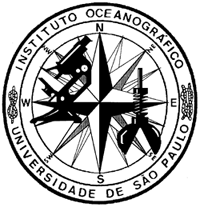In this study, the meiofauna associated with Sargassum cymosum was qualitatively and quantitatively analyzed between December 1990 and July 1991. Sampling was carried out on a moderately exposed shore at Lázaro Beach, Ubatuba (32°S - 45°W). Each alga was washed in a formaldehyde solution and the fauna in suspension was washed through a series of 500, 250, 120 and 60 µm mesh sieves. The biomass of each taxonomic group was estimated as ash-free dry weight (AFDW) according to size categories. Algae volume and dry weight were determined, incIuding epiphytes. Densities of epifauna ranged from 502.9 to 2706.6 ind.20 ml-1 as algae volume. The biomass values (326.6 to 1214.4 µg.20 ml-1 AFDW) represented a low standing stock. Harpacticoid copepods and their nauplii were the dominant group and also showed the highest biomass values, being represented by larger individuaIs (250 to 120 µm). Higher values were observed between the end of the summer and the beginning of the fali (March and April), decreasing until winter (July). This variation may be explained by habitat complexity changes, or reproduction of some taxa, as higher meiofaunal densities were found on the 60 µm mesh sieve, incIuding high percentages of nauplii.
Meiofauna; Fital, Sargassum; Ubatuba; São Paulo
